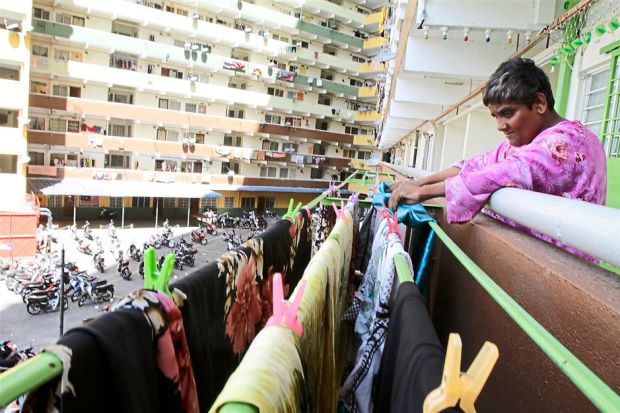The meaning of house and housing have drastically changed over the last 30 years, with the standards improved and satisfaction elements differing during those periods.
New legislation in various countries also confirmed that the government’s opinion on housing has evolved and they are now more inclined to low-income housing.
Malaysia, as a developing country and one of Asia’s tigers, aims to become a developed nation by 2020. It is a nation of two distinct geographical regions – the Peninsular Malaysia and East Malaysia. Peninsular Malaysia includes large cities and has active industrial, service and agricultural economy, while East Malaysia is a land of forests and plantations.
While Malaysia’s federal government and state governments support public housing schemes in urban areas, there are still a lot of families that are yet to be reached by these programs. Thus, affordability remains an issue, with land and housing costs beyond the reach of those living below the poverty line.
For a long time, the lack of affordable housing projects remained an acute problem in Malaysia. Although there are now new projects on developing affordable homes, the number of affordable homes is still way below from satisfying the massive public demand.
Penang Development Corp (PDC) recently released a Request for Proposal (RFP) for the establishment of the state’s ninth affordable housing project. Nestled on 4.23 acre site in northeast Penang, the project will have 482 medium-cost houses and 321 low-medium cost homes.
The RFP states that that there would be 241 units with an area of 1,000 sq ft and price of up to RM400,000; 161 units with an area of 900 sq ft and price of up to RM300,000 and 80 units with an area of 800 sq ft and price of up to RM200,000.
A survey showed that the proposed site had several squatter houses, temples, workshops and go-downs, but none of these had temporary occupancy licenses (TOL). The few residential homes with TOL are situated on a marshland, suffering from severe floods and high tides. The affected families are offered a free unit at the project.
The need for affordable homes
With the sky-rocketing property prices, many Malaysian middle class cannot afford to buy a house. Most of them are forced to rent a home or go for a place at the city outskirts. Condominiums in Selangor and Kuala Lumpur usually go for RM500,000 and above, while landed properties at matured areas such as Petaling Jaya or Taman Tun Dr Ismail cost more than RM1 million. This makes it almost impossible for someone earning a monthly income of RM5,000 to buy a home.
In a bid to help the lower to mid-income earners buy a home, the government introduced the My First Home Loan Scheme. Under the scheme, an individual earning a monthly income of less than RM5,000 can apply for a 100 percent housing loan at a bank instead of paying the 10 percent down payment.
However, the scheme has its problems as it requires the eligible applicants to pay RM2,000 for homes costing RM400,000. And as house prices continually increase, the dream of owning a home by the low and middle income class is becoming more elusive.
Present situation of affordable housing
In 2013, Malaysia’s population rose to 30 million from 21.3 million in 2000. Over the years, the death and birth rate decreased, while life expectancy increased from 71 to 73 years. The country’s GDP also increased with the per capita income. However, this also saw home prices increase to record levels. Notably, house prices climbed 12.3 percent year-on-year during the last five years.
Minister of Urban Wellbeing, Housing and Local Government, Dato’ Abdul Rahman Dahlan noted that there is a 40 percent difference between the supply and demand for affordable homes in Malaysia. The Department of Statistics Housing Income Survey 2013 indicated that 80 percent of Malaysians earn a monthly income of less than RM6,900 and cannot afford to buy a home priced at above RM300,000.
A report by the National Property Information Centre revealed that only 31.7 percent of the total number of housing units built in 2012 cost less than RM250,000. Although the income of the middle class has increased, it still cannot keep pace with the hike in property prices; hence, the need for affordable homes.
The government’s role to solving the problem
When it comes to developing affordable and low cost homes, the government has a lot to do.
The previous Tenth Malaysia Plan (10MP) shows the government establishing 78,000 affordable homes, of which 38,950 will be under the People’s Housing Program while 39,050 will be under the Ministry of Rural and Regional Development’s programs. In 2014 Budget, the government also announced that it will provide RM30,000 subsidy for each unit. The move is aimed at encouraging developers to develop more medium- and low-cost homes.
From 2014, developers are mandated to build at least 20 percent medium-cost homes and 20 percent low-cost homes in a housing project. These houses are open to first-time house buyers with a household income of up to RM6,000 per month for medium-cost homes and RM3,000 per month for low-cost homes.
Meanwhile, the government can provide free land at strategic locations as an alternative to compulsory affordable housing construction. They can also fix the proportional increase in price per square feet for affordable homes under the development projects.
But if the government wants the developers to be responsible for the development of the homes, then they can offer incentives by building small malls and shops within the affordable housing areas. This will provide developers with decent profit to compensate for the construction subsidy.
People’s cooperation
When buying a home, Malaysians should apply rational and logical arguments and not rely on their emotions. One should conduct a thorough research of the housing project and developer.
Simply put, one should not invest into something just because someone says so. Many people with low income fail to see their future financial situations and instantly dived into buying a property that is well beyond their means.
When scouting for an affordable home, one may probably be searching for those located near the city. While these two considerations are unlikely to match, the government are developing infrastructures with low cost housing residents in mind. For instance, MRT Line 1 and 2 as well as LRT Line 1 and 2 extensions are now under constructions.
LRT Line 3 from Shah Alam/Klang to Petaling Jaya will soon be developed along with several highways and expressways. With home prices more affordable in Sungai Buloh or Kajang, it will soon be possible to purchase a home there and still work in Kuala Lumpur without the pressing need to buy a car.
Farah Wahida, Editor of PropertyGuru, wrote this story. To contact her about this or other stories email farahwahida@propertyguru.com.my



